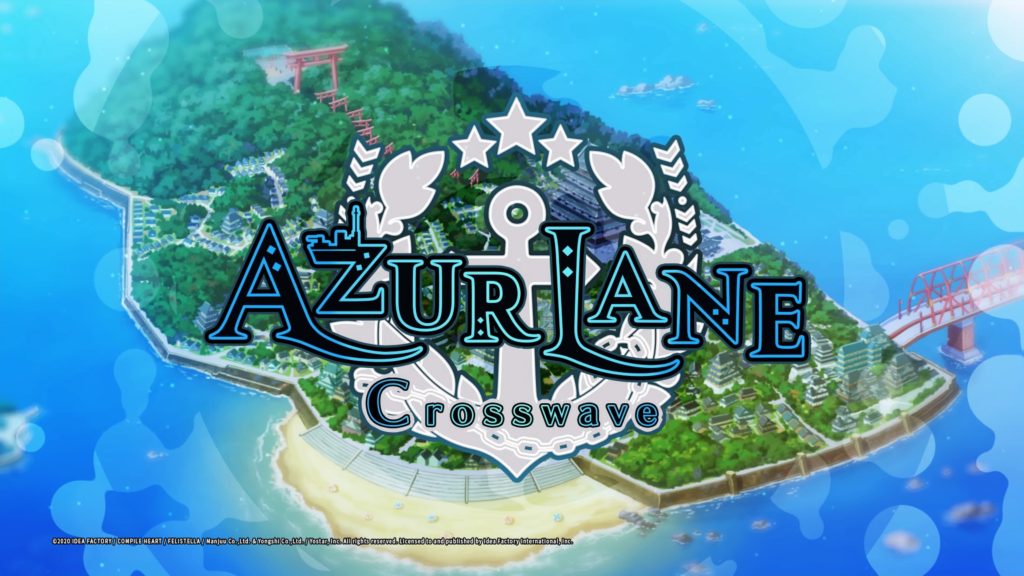
I had no idea what I was getting into with Azur Lane: Crosswave. None whatsoever. The trailers were fascinating and looked like strange melding of a naval conflict and a shmup. The art style was very detailed and unique. The music was pulse pounding. It had all the hallmarks of a fantastic game, honestly. But I didn’t realize that Azur Lane was also a previously existing IP and that Crosswave was the most recent spin-off released from it.

Turns out Azur Lane is a pretty big deal, especially in the mobile world. The phone game is a Chinese online powerhouse put out by Shanghai Manjuu and Xiamen Yongshi. It has millions of players and it’s a fairly complex phone game mixing strategy, action, and moe in a way that’s fairly unique. The game is free to play on mobile for Android and iOS with microtransactions, and it’s surprisingly fun too. The idea behind Azur Lane is that moe girls are also somehow simultaneously historical battleships, albeit modified visually to look much more like anime girls, with weird personalities and all. It’s bizarre, funny, confusing, and endearing all at once.
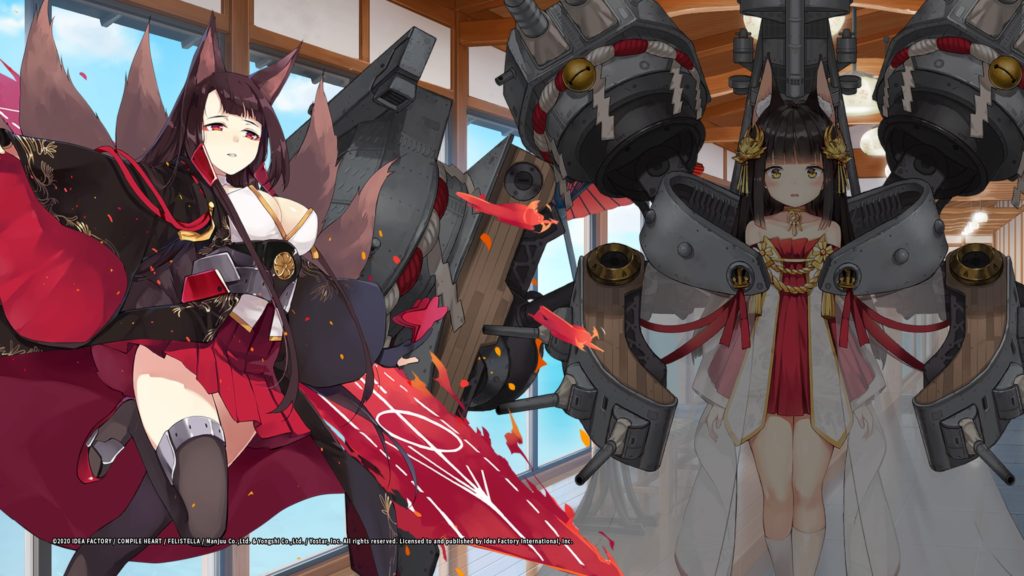
Azur Lane has been so popular that the phone game has even had crossovers with Hyperdimension Neptunia, and has now spawned an anime (which is pretty weird too), and now Azur Lane: Crosswave, developed by Felistella and Idea Factory and published by Compile Heart. But what’s the actual game like? A massive naval combat game? A cheesecake moe title? Turns out it’s a bit of both and hard to quantify.
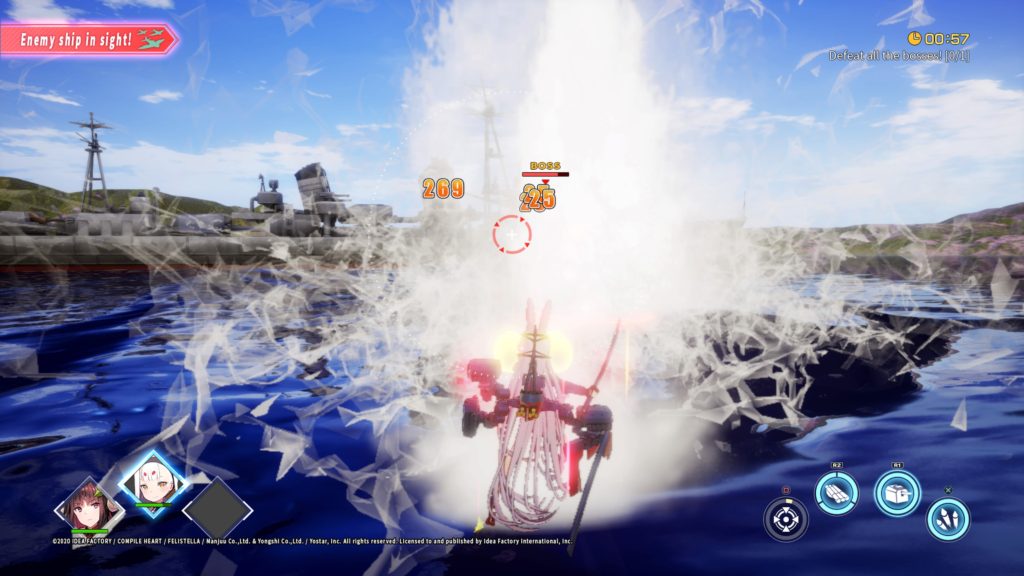
Azur Lane: Crosswave follows the exploits of the Sakura Empire (read: Japan) as they ready themselves for a naval battle competition, which they’ve designed as an excuse to investigate some mysterious cubes dropped into the ocean by the alien Sirens. There are four major empires in Azur Lane, Sakura Empire, Royal Navy (England), Eagle Union (United States), and Iron Blood (Nazi Germany). Everything takes place in a post-WWII environment and all the girl/ships are based on real battleships. They’ve just finished up the war, and they’re hesitant to work together in any way. Things get mighty complicated mighty fast, however.
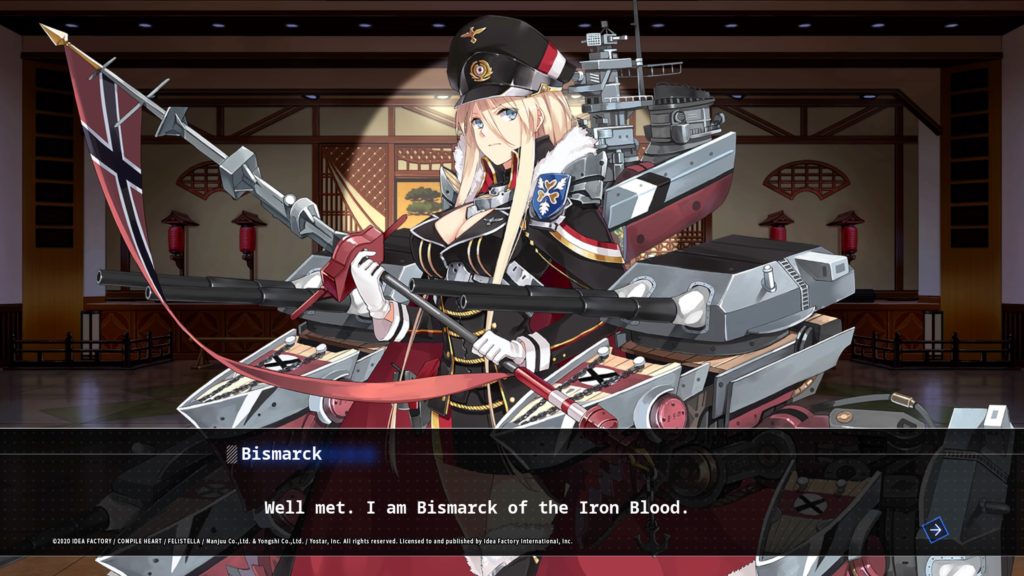
I’m not going to go into detail in the plot here and there’s a good reason for it. Azur Lane: Crosswave has a lot of plot. I mean absolute reams of it. It’s almost ridiculous how much dialogue there is in the game, actually. If you’re expecting an action title of any kind, alter your expectations. This is primarily a moe visual novel with cutesy battleship girls. Sure, there are some aliens, sure, there’s some combat, but none of it is what you’d expect. Every cut-scene is impeccably voiced in Japanese with English text, and they’re also incredibly long. Now don’t get me wrong, I love visual novels. They’re an excellent genre addition to gaming. But I like mine to make sense, and that’s where Azur Lane: Crosswave has some issues.

The problem here is that Azur Lane: Crosswave is pure and utter fan service. This is a game designed entirely for fans of Azur Lane in such a way that gameplay is secondary in every respect. While it’s primarily a visual novel, the storyline is shallow, tedious and not very compelling. There’s a lot of it and it’s incredibly detailed, but as visual novels go, it’s pretty uninteresting. As you’re waiting for the gameplay to actually start, it’s easy to get lost trying to figure out what’s going on because more and more characters appear with barely an introduction, and most of them pretty much look like schoolgirls with cybernetic battleship modifications. Sure, you can follow the story, and it fits into the Azur Lane universe well, but for anyone unfamiliar with the series, it’s not really made as a jumping on point.
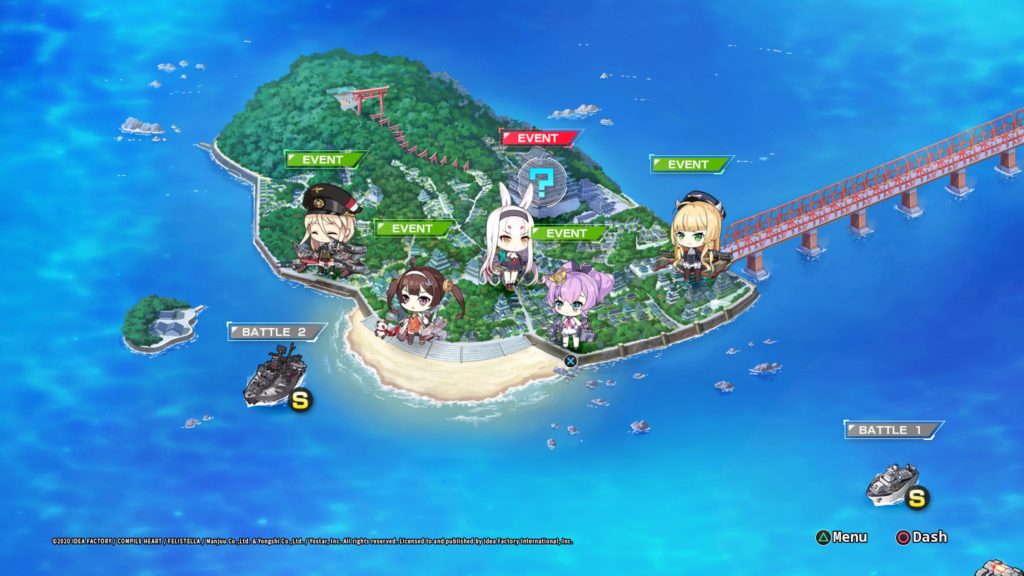
Once you manage to get past the massive exposition and start playing the game, you’re also in for a surprise. Remember I mentioned how exciting the trailer for Azur Lane: Crosswave looked in terms of gameplay? That’s deceptive too. Turns out that all gameplay for Azur Lane: Crosswave takes place on a static ocean grid. You can’t leave the boundaries of rather constrictive rectangle and you can only zip around the screen and fire at the enemies. It looks like it would be fun, with barrages of enemy battleship fire blasting your way and the girls sailing across the waves to slaughter them and enemy ship/girls, but it’s really not. Every battle consists of you and 1-2 other girls and up to three support ship/girls fighting whatever pops up. You wait for your weapons to charge, much like the mobile game, and then fire, but in a 3D battlefield, all while holding R1 constantly and firing your light guns. The entire goal is to destroy everything onscreen inside 120 seconds without losing a ship to attain an S ranking in battle.
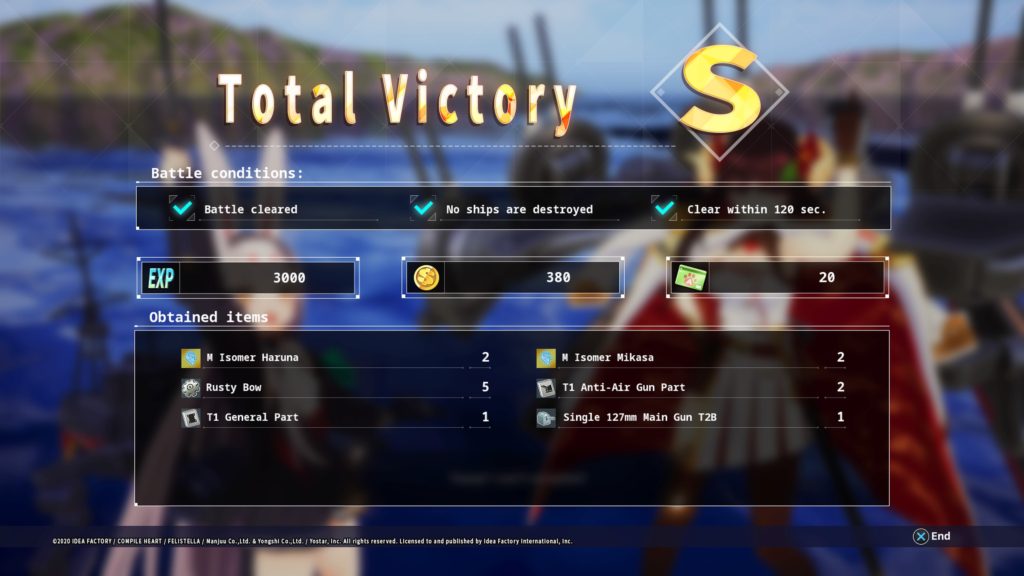
You read that right. Every combat scenario is designed to be potentially beating in 120 seconds. Two minutes. That’s all you get, then it’s back to another 10-20 minutes of dialogue almost every time. So just when you get fired up to actually get down to gameplay, it’s back to reading for 20 minutes. It’s so disheartening that by the end of the first chapter, I honestly didn’t care what was happening anymore. Fortunately for me there’s a skip button which allows you to blast through the dialogue at hyper speed, but even then you still are sitting, waiting to play. It’s worse than a load screen because you know things are going on, but it’s simply such a massive amount of exposition that if you aren’t fully invested in the Azur Lane universe, it’s hard to care at all. Add to that the lack of depth in the actually storyline, as Azur Lane seems to focus more on personal interactions than compelling stories or backgrounds and you have the ultimate fan service title, presenting as much girl/ship on girl/ship action as you could desire without any of it edging too far towards hentai and sticking firmly in the moe realm.
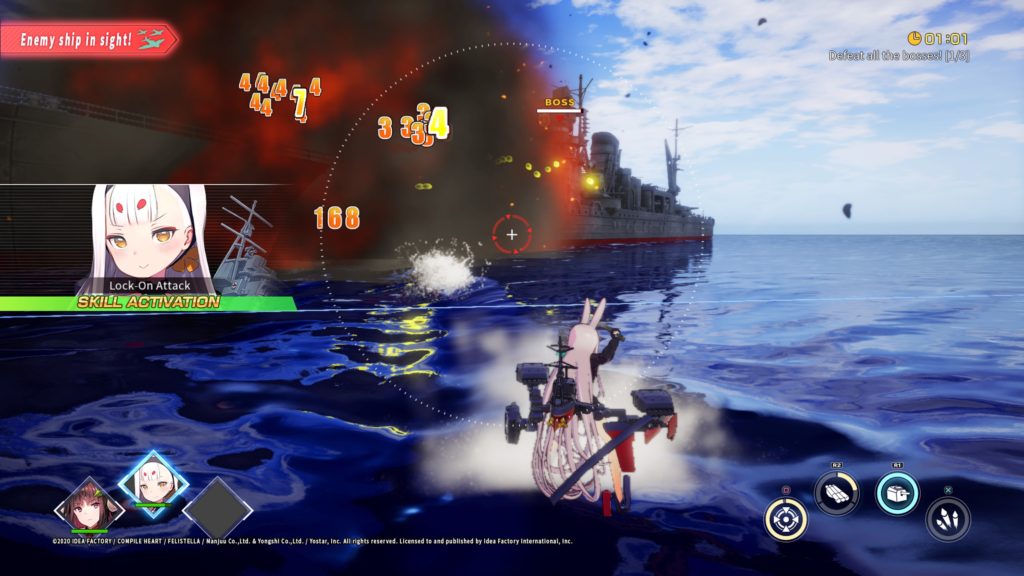
But what you don’t have is much in the way of gameplay. The combat scenarios quickly become tedious and the difficultly ramps up bit by bit over eight chapters, but presents no real challenge. Simply upgrade your ship/girls with the items and weapons you find and keep your damage numbers growing and you’ll be fine, no matter what’s thrown at you. There’s a massive cast of partner and support ship/girls to choose from and the variety is endless but with the lack of depth, it’s pretty much meaningless. I actually had more fun customizing and upgrading my ship/girls than I had playing the game itself.

Unfortunately, that’s pretty much all there is to Azur Lane: Crosswave. Read, play for two minutes, and do some upgrades. It’s a little too close to a mobile game design for comfort, and the combat, while bordering on the edge of interesting, simply falls flat. If you’re an Azur Lane fan, this is probably pretty much what you wanted, but for the rest of us, it’s a dud, and a pretty rough one at that. And don’t get me wrong, the voice acting is excellent, the artwork is excellent, and the music is solid. But the game itself is simply shallow, tedious, and disappointing on every level. For a whopping $50, this is one title better off avoided by everyone but the most serious of fans.
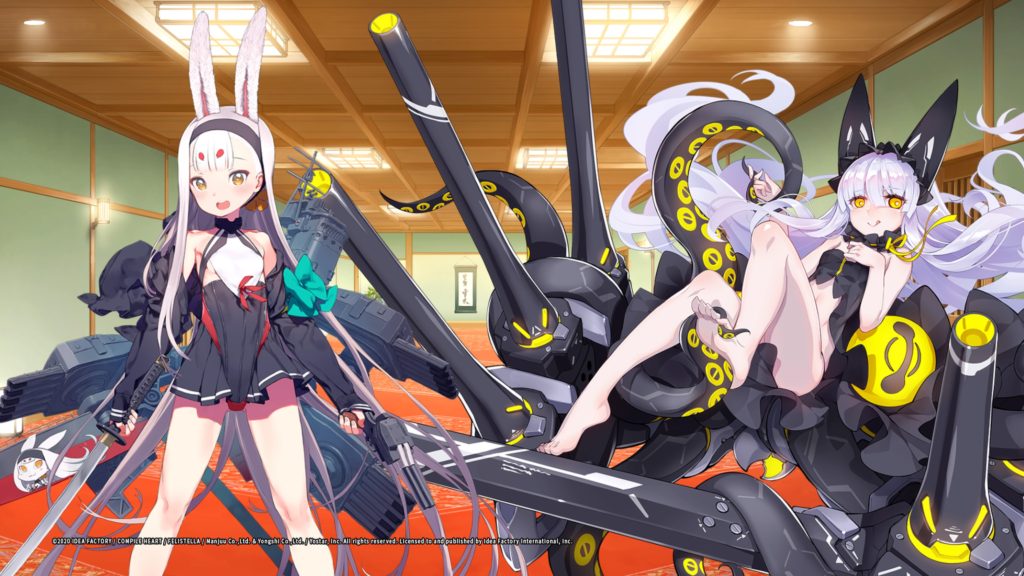
This review was based on a digital copy of Azur Lane: Crosswave provided by the publisher. It was played with a PS4 Pro on a Sony 55” 1080p TV. Azur Lane: Crosswave is also available on Steam if you’re interested. The mobile game is actually a bit more fun than Crosswave, and it’s free if you’re into that sort of thing! And in case you’re wondering about the title of this article, I felt it was apropos to link it to this song from 1986 by the Georgia Satellites which uses battleships as a euphemism for love! I kind of wish they’d licensed it for Azur Lane as that would have been awesome! Enjoy!

